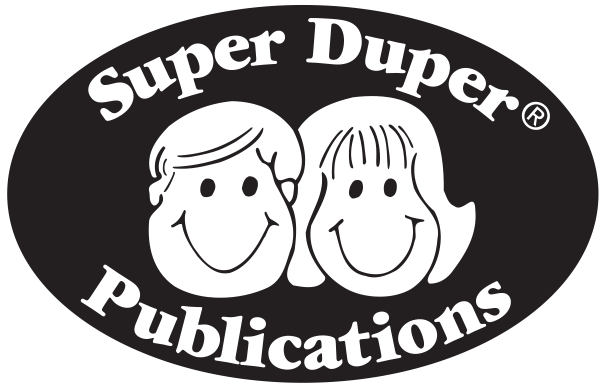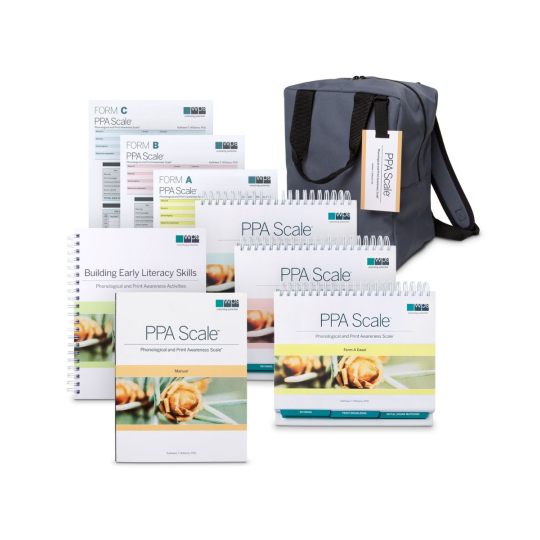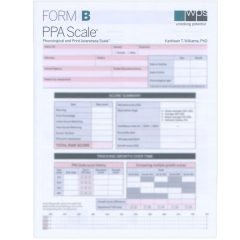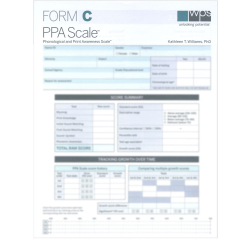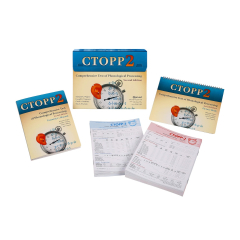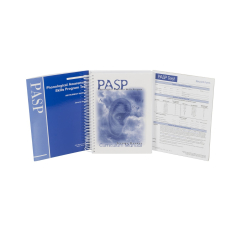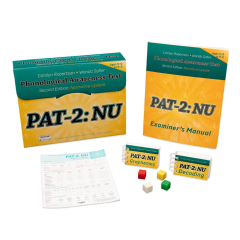PPA Scale Comprehensive Kit
Ages:3;6 to 8;11
 FREE SHIPPING over $75
FREE SHIPPING over $75 90-Day Return Policy
90-Day Return Policy We Accept Purchase Orders!
We Accept Purchase Orders!
More Information
| Author(s) | Kathleen T. Williams, PhD |
|---|---|
| Topic | Curriculum-Based Resources, Early Skills, SLP Resources, Tests, Phonology |
| Brand | WPS |
More Information
PPA Scale Comprehensive Kit
- Ages: 3;6 to 8;11
- Time: 10 to 15 minutes
- Administration: individual
- Norm-referenced: standard scores, descriptive ranges, confidence intervals, percentile ranks, and test-age equivalents
- PPA Scale Comprehensive Kit: 25 each of Forms A, B, and C; Easels A, B, and C; Manual; Building Early Literacy Skills (PPA Activities book); all in a sturdy canvas bag. Includes access to PPA Scale online scoring and reporting features available through the WPS Online Evaluation System (platform.wpspublish.com). Registration required. (2014)
- Qualification Level: B
The Phonological and Print Awareness Scale (PPA Scale) measures early literacy skills and allows examiners to track the development of these skills over time. Administration of this research-based, standardized test is quick and helps identify children who may benefit from early intervention. Results are useful for any professional who measures early literacy skills, including speech –language pathologists, psychologists, reading specialists, educational diagnosticians, early childhood specialists, and teachers.
The PPA Scale assesses two important literacy skills that consistently demonstrate a strong, predictive relationship with later measures of reading and writing:
Phonological awareness: The ability to recognize and manipulate the individual sound structures of a whole word without any reliance on print
Print awareness:The understanding of the elements of print, including alphabet knowledge and concepts about print (for example, reading starts at the top left of a page)
Useful Regardless of Speech and Language Abilities
Use the PPA Scale with children ages 3 years, 6 months to 8 years, 11 months—the age range in which most children acquire phonological and print awareness. Administration takes just 10 to 15 minutes and uses a receptive, multiple-choice response format, which is ideal for assessing young children. The examiner reads instructions using a colorful self-standing easel, and the examinee only has to point to indicate his answer—verbal responses are not required. This format makes the PPA Scale useful for evaluating children with speech impairments and/or expressive language difficulties, or those who are simply reticent.
The PPA Scale has 69 items representing six tasks, evaluated for qualitative purposes. The six tasks measure:
- Rhyming: Ability to recognize rhymes, which is an early phonological skill requiring recognition of the sound structure of language
- Print Knowledge: Ability to recognize important elements of print, including identification of individual capital and lowercase letters
- Initial Sound Matching: Ability to isolate and match the first phoneme (smallest unit of speech sound) in a pair of words
- Final Sound Matching: Ability to isolate and match the last phoneme in a pair of words
- Sound–Symbol: Ability to isolate the initial or final phoneme (sound) and match it to the corresponding grapheme (symbol)
- Phonemic Awareness: Ability to segment the individual phonemes in a word
Based on influential early literacy research with preschoolers and early elementary school children, the items provide a narrow focus on phonological and print awareness skills, without placing demands on other cognitive abilities (for example, memory). Authors reviewed all stimulus pictures for fairness for use with both males and females of differing ethnic backgrounds.
Identify Areas for Improvement and Monitor Progress
Three parallel forms (A, B, and C), each with an accompanying easel, allow examiners to identify areas needing improvement and easily track progression of these areas over time.
The PPA Scale provides a standard score (and several other scores) for comparing a child’s performance to that of typically developing peers of the same age and a growth score that indicates a child’s progress along the continuum of phonological and print awareness abilities measured by the PPA Scale. The growth score is the best way to measure a child’s development over time.
A Descriptive Summary on the Record Form offers a qualitative way to evaluate item- and task-level performance. It allows you to easily review the objectives of missed items and discover patterns which can help identify areas of strength and those that need improvement. The examinee’s overall abilities as indicated by the standard score and growth score, and the specific areas needing improvement identified by the Descriptive Summary can help create a targeted intervention plan.
Standardization and Technical Properties
A nationally representative sample of 1,104 examinees, stratified to match the 2010 U.S. Census data, include gender, ethnicity, Hispanic origin, region, and head of household’s education level as an estimation of SES (socioeconomic status). Also collected was a validation sample of 162 children with a speech, language, or other clinical diagnosis. Analyses of these samples show that the PPA Scale differentiates typical children from those with a learning disability, reading disorder, developmental delay, autism spectrum disorder, or intellectual disability. In addition, it has high internal consistency, test-retest, and alternate form reliability. Further studies provide evidence of the content, construct, convergent, and discriminate validity of the PPA Scale.
Rely on the PPA Scale in Educational, Clinical, and Research Settings
Because of its focused age range, research-based content, and three parallel forms, the PPA Scale has many applications in school and clinical settings:
- Screening to identify children who are behind their peers
- Identifying strengths and areas needing improvement
- Tracking progress over time using the growth score and three parallel forms
- Researching the effectiveness of early literacy programs
Building Early Literacy Skills: Phonological and Print Awareness Activities
Included in this comprehensive kit is the book Building Early Literacy Skills. This book presents extra activities to help children develop the crucial early literacy skills of phonological and print awareness and improve essential vocabulary knowledge, as well as and improve receptive and expressive oral language skills. Speech–language pathologists, early childhood specialists, special educators, parents, and caregivers can complete the activities with children. Each activity includes an objective; suggested setting (group or one-on-one); needed materials (such as beads or Play-Doh); and instructions with helpful tips and adaptations for home-use. There are three parts to the activities:
- Part 1: Activities to Develop Phonological and Phonemic Awareness Sections: Rhyming, Sentence and Syllable Segmentation and Blending, Initial and Final Sound Matching, and Phonemic Awareness
- Part 2: Activities to Develop Print Knowledge Sections: Reading Aloud, Recognizing the Functions of Print, and Building Letter Knowledge
- Part 3: Activities to Develop Sound –Symbol Correspondence Sections: Initial Consonants, Consonants and Vowels, Consonant Digraphs and Consonant Blends, and Short and Long Vowel Phonograms
PPA Scale Complete Kit:
- 25 each of Forms A, B, and C
- Easels A, B, and C
- Manual
- Building Early Literacy Skills: Phonological and Print Awareness Activities book
- Sturdy canvas bag.
- Access to PPA Scale online scoring and reporting features available through the WPS Online Evaluation System (platform.wpspublish.com). Registration required.
